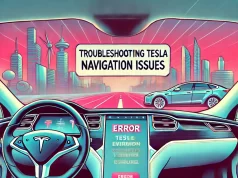Have you ever tried to charge your iPhone 13 or 14 in your Tesla car and found out that it doesn’t work?
If so, you are not alone.
Many users have reported this issue on various forums and social media platforms.
In this article, we will explore the possible causes and solutions to why iPhones not charging in Tesla and how to fix it.
Why is the iPhone Not Charging in Tesla?
Some iPhone models, such as the iPhone 14 Pro and the iPhone 13 Pro Max, have cameras that protrude from the back of the phone
This makes it difficult for the back of the phone to touch the Tesla wireless charging pad and therefore disrupts the alignment between the device and the charger.
As a result, the phone does not charge, or charges very slowly or intermittently.
How to Fix Your iPhone Not Charging in Tesla Issue?
There are a few possible ways to fix your iPhone not charging in the Tesla problem. Here are some suggestions that you can try:
#1. Remove the phone case
Some phone cases might interfere with the wireless charging process, either by adding extra thickness or by blocking the electromagnetic field. Try removing your phone case and see if that helps.
#2. Use a Compatible iPhone Case
Using a compatible phone case for your iPhone might help you in doing wireless charging in Tesla, depending on the model of your phone and the thickness of your case.
#3. Reposition your phone
Try to find the sweet spot where your phone can charge on the Tesla wireless charging pad.
You might need to adjust your phone slightly to the left or right or flip it over so that the screen faces down.
You can also try using the passenger side of the charger if the driver side does not work.
#4. USB PD Type-A Ports
One potential solution could involve Tesla integrating USB Power Delivery support directly into their USB Type-A ports.
By allowing these ports to dynamically adjust voltage and amperage to meet various device requirements, Tesla could offer a more universal charging experience, catering to both their own devices and popular smartphones.
#5. Wireless Charging Integration
Tesla could invest in wireless charging technologies for smartphones, allowing for more convenience and compatibility.
This would eliminate the need for cables and adapters altogether, creating a seamless experience for users regardless of their device brand.
#6. Open APIs for Third-Party Integration
Offering open APIs (Application Programming Interfaces) could enable third-party developers to create Tesla-compatible charging solutions for various devices, including iPhones.
This approach would promote innovation and allow Tesla owners to choose from a range of accessories that suit their needs.
#7. Update your iOS
Sometimes, software updates can fix bugs or improve compatibility issues with wireless charging.
Make sure your iPhone is running on the latest version of iOS, and check if there are any updates available for your Tesla software as well.
#8. Use a different charger
If none of the above methods work, you might need to use a different charger for your iPhone.
You can either use a wired charger that plugs into your Tesla’s USB port, or a wireless charger that is compatible with your iPhone model.
For example, some users have reported that the Apple MagSafe charger works well with their iPhones in their Teslas.
You can also look for other Qi chargers that have a higher power output or a better design.
Conclusion
iPhone not charging in Tesla is a common problem that affects some iPhone models with larger camera bumps. The problem is caused by a misalignment between the device and the Qi charger in the Tesla vehicle.





